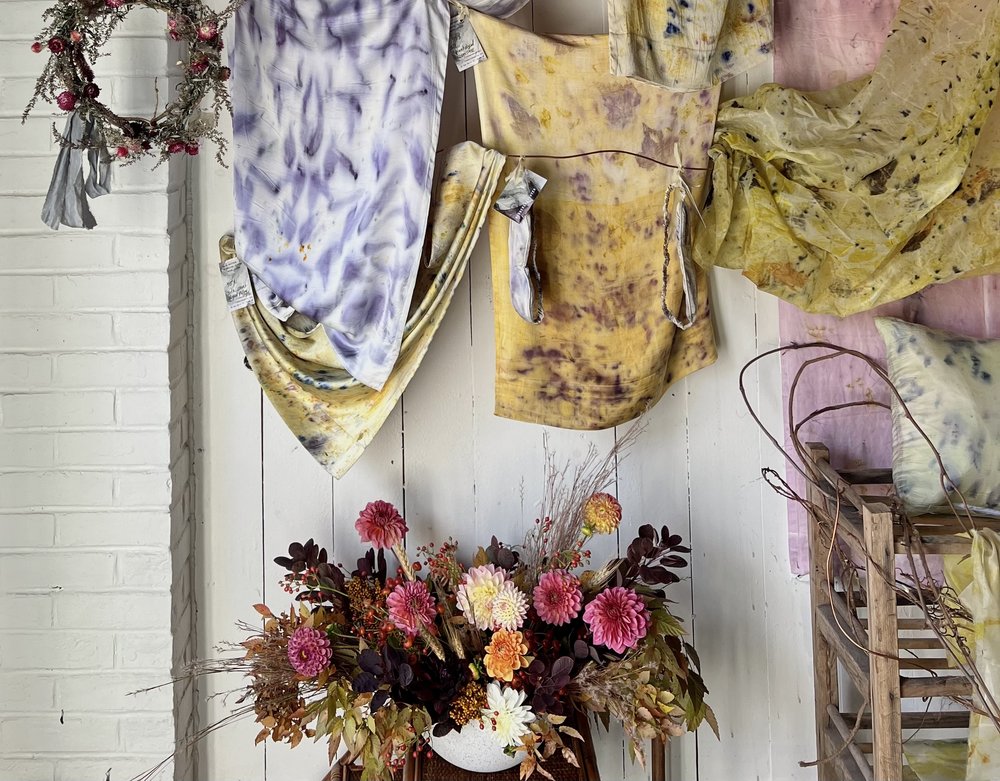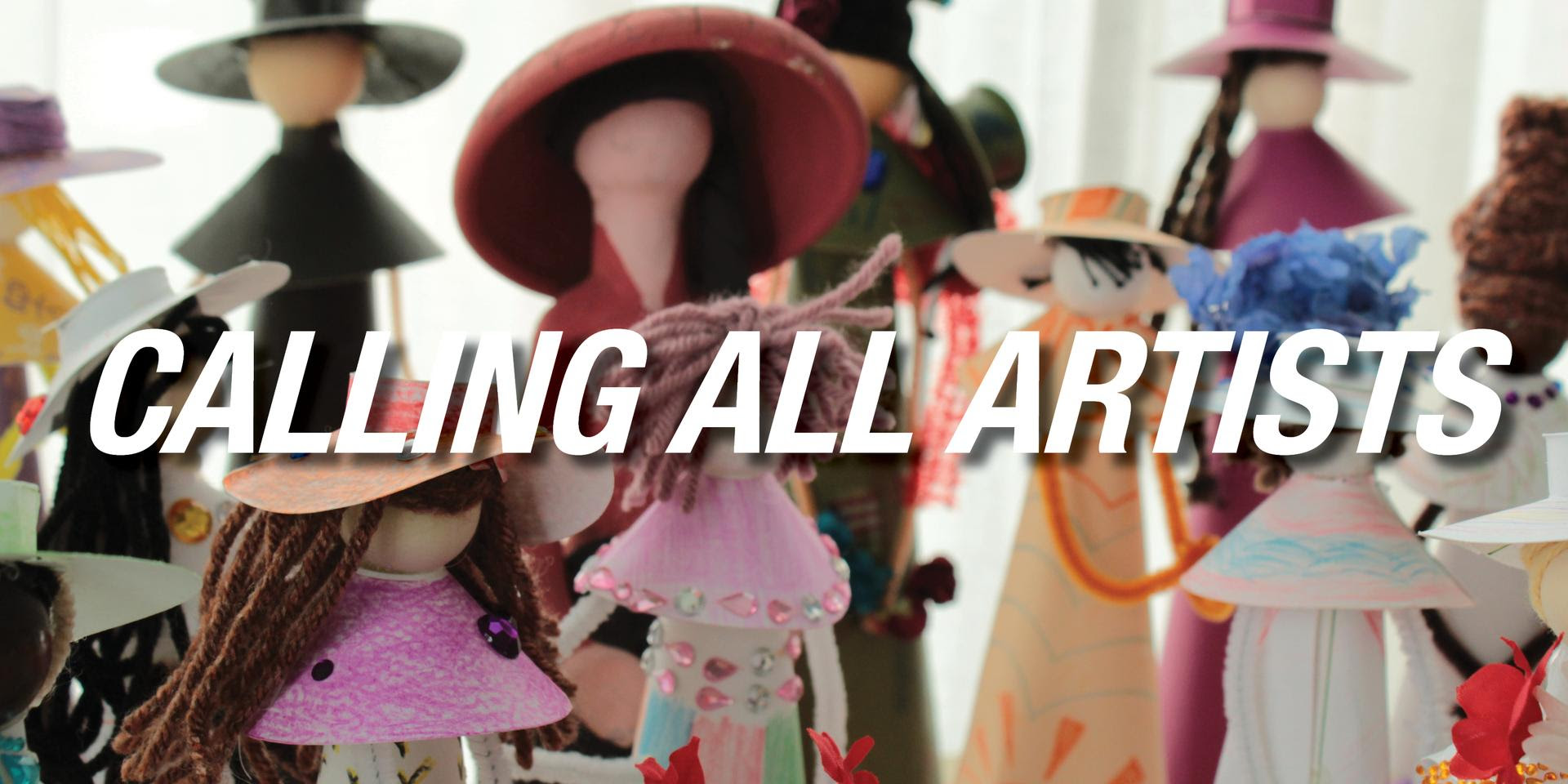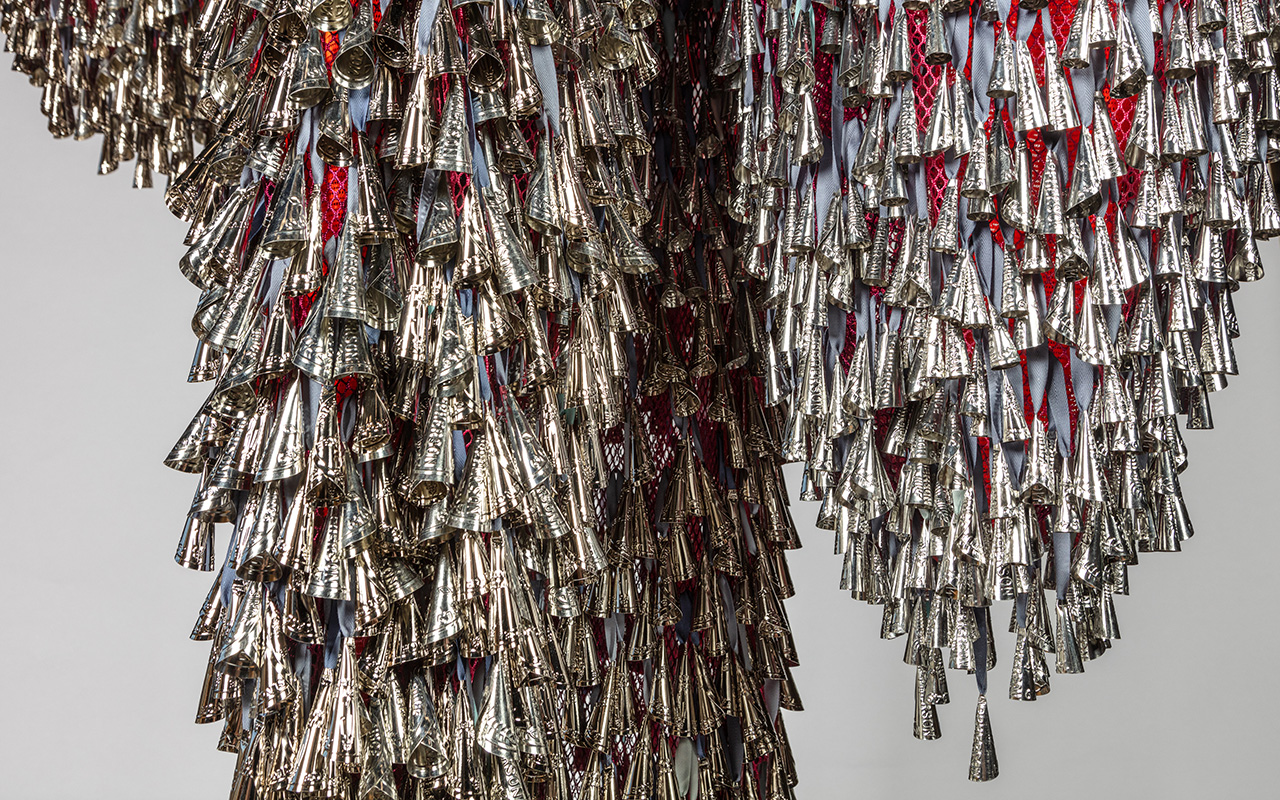

When you want to see or buy art or listen to live music, where do you go?
by Joey Phoenix
Photo Credit: December Open Walls at Front Street Coffeehouse
When many people consider what it means to support the arts, oftentimes they think of traditional settings like art galleries or museums. While these institutions are by no means going anywhere, they have become merely a part of a much larger network of organizations and groups that support the arts locally and regionally.
Coffee shops, breweries, and restaurants have played a large role in bridging the gap between the public and the people making the art in a way that’s more accessible to the people viewing it and to the artists themselves. This is because they tend to be hyperlocal gathering spaces with access to hyperlocal makers, artists, and musicians.
This is also because they are third spaces – spots instrumental in community building. For those unfamiliar, a third space is a distinct social gathering place following the home (first place) and the workplace (second place) where people feel comfortable gathering to eat, meet friends, or hang out. Other examples of these third spaces include libraries, parks, and religious gathering places.
In a world where arts funding is hard to come by and both art galleries and music venues are hugely selective about who will play or be exhibited within their walls, third spaces like restaurants, breweries, and coffee shops are opening doors that previously just didn’t exist. New artists, rising artists, and even established artists have come to see third space walls as another place to show their work and maybe make a sale or two.
Denny Tentindo, creative director and curator of the Witch DR Gallery as well as the curator for Front Street Coffeehouse and Howling Wolf Taqueria (all in Salem), also believes that displaying work by local artists on restaurant and café walls is wildly beneficial for both artist and venue.
“It’s a great way to keep the decor fresh and exciting for customers,” Denny said. “One of my favorite things to do is sit in the corner at [Front Street Coffeehouse] and watch and listen to the customers talk about the new art. I have been told by many people that they love coming in at the beginning of the month to see what’s new on the walls.”
Denny also explains that, for an artist, having this sort of venue to show their work in is a low-pressure first step in understanding what it means to be an exhibiting artist.
“It’s not only a place to showcase and sell their work but also a low-pressure way to learn how to display their work correctly,” he explained. “From framing, wiring and hanging everything correctly and in a way that excites the viewers, to seeing what people respond to in terms of price and style, to learning how to set goals and meet deadlines.
“All of this is very important when it comes to hanging and selling work in a more upscale gallery so having places to essentially practice and learn is invaluable.”
On the other hand, for the venues, the decor is part of its ambiance, and the work of artists can add a lot to the appeal of the space. In some cases, new art on the walls can feel like the venue has changed entirely.
How this often works is that artists and venues come into an agreement about how long the exhibit will run and what happens when work gets sold. At Front Street Coffeehouse, for example, the art on the walls – sometimes featuring the work of a single artist or multiple – rotates monthly, and 100% of the sale goes to the artist. Many venues, however, choose to split the sale, usually with 25-50% going to the venue and the rest to the artist.
Serenitee Restaurant Group has long been an advocate for providing opportunities for artists of all kinds in their various restaurants around the North Shore. Most of their restaurants provide wall space for artist exhibitions, and 15 Walnut, Minglewood Harborside, and Opus are all hotspots for live music.
“We believe that restaurants should be woven into the communities they serve,” said Mark McDonough, owner of Opus/the Serenitee Restaurant Group. “One way we do this is by displaying local artists’ work. We also hire local bands, and each Serenitee restaurant chooses a charity within their community to support.”
Is Art in Third Spaces Public Art?
If it can be argued that the art housed within gallery walls can be considered private art, does that make art in third spaces like food and drink venues a kind of public art? The answer is complicated, but it’s much closer to yes than one might think.
Kati Nalbandian, Director of Marketing at Creative Collective and former art curator for the Serenitee Restaurant Group, happens to agree.
“While not everyone gets to fine arts and contemporary art galleries, many people frequent restaurants, bars, and cafes,” she said. “This is another stem of the Public Art theory, where instead of asking people to come to the art, the art comes to them.
“It’s a more natural approach than large scale public art in some instances, and therefore is more relatable and accessible to the community and its visitors alike,” she added.
Recognizing the significance of creating these opportunities for artists, in 2020, Granite Coast Brewing Co. in Peabody is teaming up with Creative Collective to create a rotating art show, featuring work by local artists, based around 20 feet of dedicated wall space in the brewery’s taproom.
Rob Dunn, Taproom Manager and Brewery co-owner, when asked about what work will be displayed there: “The work chosen will be coordinated with the feel of the taproom, to express a cultivated experience meant to grow the culture and vibe of our location. We hope to rotate these artists once a month as we move into the program and have the ability to expand into additional wall space in our location.”
The Brewery also plans to host vendor marketplaces and creative classes on-site in addition to gallery space for local artists.
“These markets and gallery shows also give people a reason to linger longer, have a discussion about what they see while they enjoy one of our craft beers,” Rob added.
Cafés, Breweries, and Restaurants are in the unique position of being able to offer opportunities to artists because they have space and understand the draw. Venue patrons have learned to expect more from the places they hang out than just good food or drink, and while that will always be a big part of food and drink culture, it helps to have other things to pull in business.
If guests wanted a place to go that had passable coffee and no atmosphere, or bad beer and canned music, they could easily go find a franchise or chain. It’s the local touches and the unique finishes that make a place more enticing, and sometimes it’s as easy as inviting local artists to put their art up on the wall for sale or local bands to come and play music that draws in crowds.
Tami Elaine Prince is a multimedia artist who has shown her work in Boston and the North Shore many times in the last two decades.
“I’m an advocate for art for everyone,” Tami said. “Not everyone will walk into a high-end gallery, but everyone will go out to eat. It starts the conversation about real art, interest in pieces, etc.
“I used to sit in restaurants where my art was up just to witness and listen to comments to learn. If an art piece is above someone’s table it becomes a conversation starter,” she described.
Dylan Dosch – Salem-based artist, illustrator and former employee of Front Street Coffeehouse – has had a similar experience.
“Having restaurants and cafes support the local art is great because galleries are so picky and often they only want to hang pieces they can sell for thousands of dollars. The opportunity to hang locally can be just what small-time artists or people just breaking into the art world need to get started,” Dylan said.
Third spaces reduce the instances of gatekeeping in the artist community, making it easier for artists to have their work seen, and also making it more accessible to the public to actually come into contact with art. Not everyone feels comfortable walking into a privately funded art gallery, but almost everyone feels comfortable going to their local coffee shop or bar.
“When I worked at [Front Street Coffeehouse] customers would not just regularly buy art but were also excited to see what came next and I think it helped keep people coming back,” Dylan added.
Third Space Venues Supporting More Than Visual Art
Another tradition that restaurants, cafés, and bars have supported since the mid 20th century is that of the live musician. Bands, DJs, and singer-songwriters come in and provide entertainment for guests. The venue loves it because it encourages people to come out and listen and the musicians love it because they get the chance to play.
Bent Water Brewing Co.’s taproom opened their doors in Lynn in 2016 and have been offering live music to the public ever since. Recently, they’ve started two weekly live music nights, with Fridays belonging to acoustic sets and Saturdays for a mix of local bands and musicians.
“At Bent Water Brewing Co., we love the fact that the taproom is a space where people can share their creativity over good beers,” said Robin Leopoldo, Communications Manager at Bent Water Brewing Co. “Brewing is as much an art as a science and we believe in not only sharing our craft with others but in supporting the crafts of our employees and community.
“Providing opportunities like these to local artists expands the already collaborative culture of the craft beer industry and helps individuals and businesses reach even broader audiences.”
Many restaurants that have become live music venues have also worked in weekly open mic nights, creating safe places for brand new artists to show their developing talents and for established artists to try out new work in a non-judgmental setting. One of the added bonuses of these events is that it draws a crowd who not only will show up to play but will probably order a fair amount of food and drinks. One of the most popular local open mics happens every Thursday night at Gulu Gulu Café in Salem.
“The way to move forward in this economy is to have a local place where locals can hang out and feel at home,” said Brian Donnelly, co-host of The Triumphant Return of the Son of the Gulu Gulu Open Mic Shindig, “that’s what Gulu is.”
When third spaces like restaurants, breweries, and cafés open their doors to local artists, makers, and musicians, providing opportunities for them to do the work that they do best, everybody benefits. Venues gain the chance to regularly freshen up their space or entice patrons to come and listen or see what’s new, and artists and musicians get to have an audience close to home where their work can be seen and heard.


Joey Phoenix is a performance artist and the Managing Editor of Creative North Shore. If you have an idea for a story, feature, or pictures of adorable llamas, feel free to send them a message at joeyphoenix@creativecollectivema.com or follow them @jphoenixmedia on twitter.
Why Support Creative North Shore? Help us Prevent a Paywall!
Creative North Shore is a FREE program. We are dedicated to keeping you up to date on the latest arts and culture events, cultural news and creative happenings on the North Shore, and we need your help to not create a paywall for content. Thank you for reading, and if you’d like to support our efforts directly, considering joining the Collective Club (and win free stuff!), sign up for a recurring contribution in any amount, or If you would like to see your events and Information show up here please consider becoming an individual or corporate business member.







